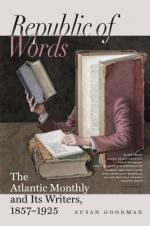* * * * *
CRETINS AND IDIOTS:
WHAT HAS BEEN AND WHAT CAN BE DONE FOR THEM.
Among the numerous philanthropic movements which have characterized the nineteenth century, none, perhaps, are more deserving of praise than those which have had for their object the improvement of the cretin and the idiot, classes until recently considered as beyond the reach of curative treatment.
The traveller, whom inclination or science may have led into the Canton Valais, or Pays-de-Vaud, in Switzerland, or into the less frequented regions of Savoy, Aosta, or Styria, impressed as he may be with the beauty and grandeur of the scenery through which he passes, finds himself startled also at the frightful deformity and degradation of the inhabitants. By the roadside, basking in the sun, he beholds beings whose appearance seems such a caricature upon humanity, that he is at a loss to know whether to assign them a place among the human or the brute creation. Unable to walk,—usually deaf and dumb,—with bleared eyes, and head of disproportionate size,—brown, flabby, and leprous skin,—a huge goitre descending from the throat and resting upon the breast,—an abdomen enormously distended,—the lower limbs crooked, weak, and ill-shaped,—without the power of utterance, or thoughts to utter,—and generally incapable of seeing, not from defect of the visual organs, but from want of capacity to fix the eye upon any object,—the cretin seems beyond the reach of human sympathy or aid. In intelligence he is far below the horse, the dog, the monkey, or even the swine; the only instincts of his nature are hunger and lust, and even these are fitful and irregular.




